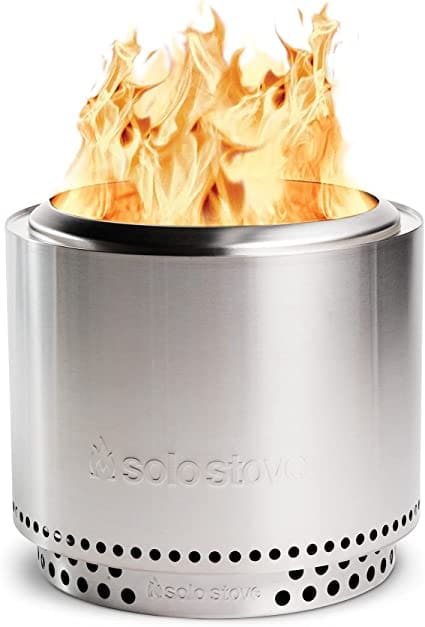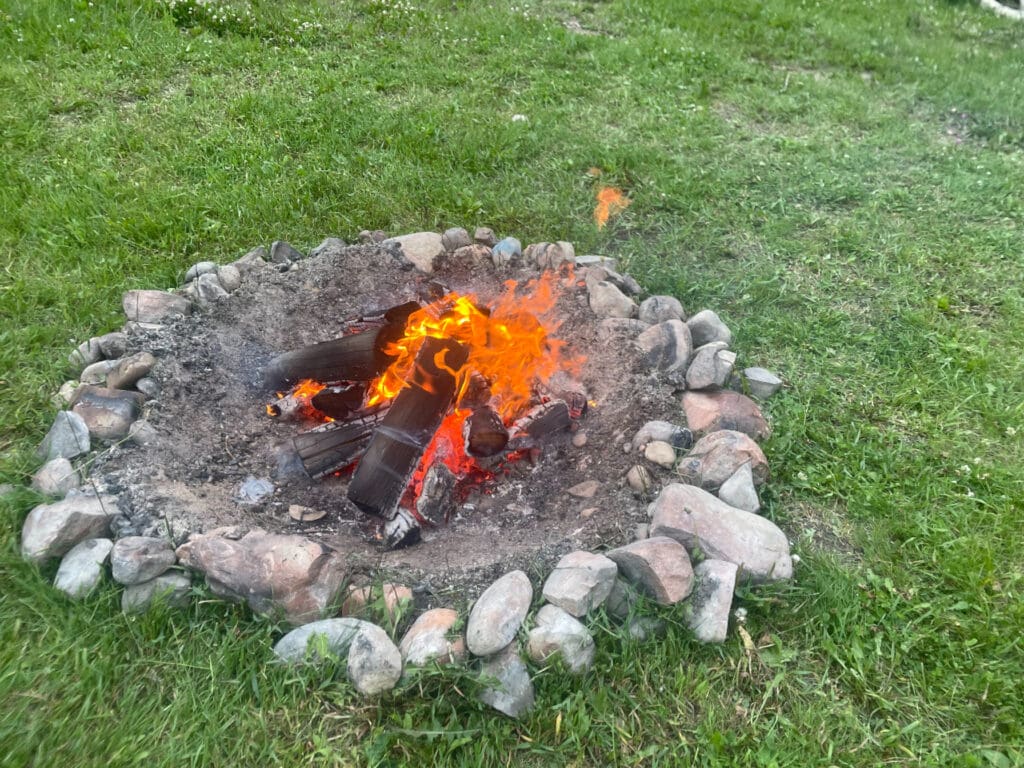How to Set Up a Campfire Pit Safely and Responsibly on Public Land
How to Set up a campfire properly is an essential part of any camping trip. A campfire provides warmth, light, and a gathering place for friends and family, creating a cozy and memorable atmosphere. However, responsibly setting up a campfire pit is crucial, especially when camping on public land. This blog post will walk you through creating a safe and efficient campfire pit while minimizing your environmental impact.
But first for those who don’t want the hassle of setting up a campfire pit but still want a campfire you can bring your own. That’s right, the Solo Stove Bonfire Fire Pit is our top recommendation for this purpose. With its portable design, smokeless burning, and easy cleanup, you’ll be able to enjoy a hassle-free and memorable campfire experience wherever you go.

I. Choosing the Right Location to Set Up a Campfire Pit
First, choose an appropriate location for your campfire once you know the local regulations and restrictions.
Research Local Regulations and Restrictions
Before setting up a campfire pit, research the area’s specific campfire regulations and restrictions. You can find information on campfire rules by:
- Visiting the website for the public land agency that manages the area
- Checking posted signs at the trailhead or campground
- Contacting a local ranger station
Select a Safe and Appropriate Spot
When choosing a location for your campfire pit, keep these factors in mind:
- Maintain a safe distance from tents and flammable materials (at least 15 feet)
- Choose a surface that is non-flammable, such as gravel or mineral soil
- Consider wind direction and find a spot with natural protection from the wind
- Ensure the area is free of overhanging branches and low vegetation
- If there’s an established fire pit at your campsite, use it instead of creating a new one.
II. Preparing to Set Up a Campfire Pit
Clear the Area of Debris
Next, clear the ground around your chosen spot. Remove any leaves, grass, or other organic material in a 10-foot diameter around the pit. This helps prevent the fire from spreading. If the ground is soft, consider digging a shallow pit about a foot deep to contain the fire.
Dig the Pit
Dig a pit that is 8 – 12 inches deep and about 2 feet wide. Use a small camping shovel to minimize your impact on the environment.
Create a Firebreak
A firebreak is a barrier that helps prevent the fire from spreading. Surround your pit with rocks, sand, or dirt to create a firebreak. This rock ring acts as a barrier, keeping the fire contained and helping to reflect heat inward. Ensure the rocks are not from a water source, as they can explode when heated.
III. Building the Fire
Set Up a Campfire by Gathering these Materials
Once your fire ring is ready, gather firewood. You’ll need three types: tinder, kindling, and fuelwood. Tinder includes small, easily ignitable materials like dry leaves, pine needles, or small twigs. Kindling consists of slightly larger sticks and branches, while fuelwood includes larger logs to keep your fire burning for a long time.
Set Up a Campfire Structure Options
There are several fire structure options to choose from:
- Teepee: Arrange the kindling in a cone shape, placing the tinder in the center. Add the fuelwood logs around the kindling.
- Log cabin: Place two fuelwood logs parallel to each other and add two more logs on top, perpendicular to the first pair. Continue stacking until you have a small “cabin” structure. Place the tinder and kindling in the center.
- Lean-to: Place a large fuelwood log on the ground and lean kindling against it. Add the fuel underneath the kindling.
Lighting the Fire
Use matches, a lighter, or a firestarter to light the tinder. Follow safety precautions, such as keeping your face away from the fire and avoiding loose clothing. Make sure there are no fire bands on and the wind conditions are appropriate before lighting.
IV. Set Up a Campfire Maintenance and Enjoying it
Fire Safety Tips
- As you enjoy your campfire, remember to keep it small and manageable.
- Never leave the fire unattended
- Keep a bucket of water or a fire extinguisher nearby
Campfire Etiquette
- Keep noise levels down and respect other campers
- Dispose of trash responsibly and avoid burning plastic or other harmful materials
- Be mindful of wildlife and avoid leaving food unattended
V. Extinguishing the Fire
Properly Putting Out the fire
Extinguish the fire with a generous amount of water, thoroughly stir the ashes, and repeat the dousing process for complete safety. Repeat until the fire is entirely out and the ashes are cool.
Cleaning up the Campfire Pit
- Return rocks and other materials to their original locations
- Fill in the pit with the soil you removed earlier
- Restore the area to its natural state, following Leave No Trace principles
VI. Conclusion to Set Up a Campfire Pit
To set up a campfire pit on public land requires responsibility and care. By following these steps, you can enjoy a safe and memorable campfire experience while minimizing your environmental impact. We invite you to share your campfire tips and experiences in the comments below. Happy camping!
Explore More Outdoor Adventures and Tips
Thank you for checking out How to Set Up a Campfire Pit on Public Land. We hope you found this guide helpful. Please share it with your friends and fellow campers to promote safe and responsible campfire practices.
For more valuable tips and guides, explore these articles on sunnydaysgo.com:
- How To Cut Firewood on Public Land in Alberta
Learn the regulations and best practices for cutting firewood on Alberta’s public lands. This guide ensures you follow the rules while gathering wood. - Popular Cabin Tent Sets Up in 60 Seconds
Discover the convenience of a cabin tent that sets up in just one minute. Perfect for hassle-free camping. - Exploring Alberta Public Land Use Zones: Your Ultimate Guide to Outdoor Adventures
This comprehensive guide covers the different land use zones in Alberta and offers tips for exploring them responsibly. - ApolloAir 17oz Camping Sleeping Pad – Sleep Like A Baby!
Get a good night’s sleep with the lightweight and comfortable ApolloAir camping sleeping pad. Ideal for backpackers and campers. - Camping on Crown Land in Alberta: Your Ultimate Guide
Everything you need to know about camping on Crown Land in Alberta. This guide covers permits, locations, and tips for a great experience.
Sharing these articles helps others discover the joy of camping and outdoor adventures. Happy camping!

